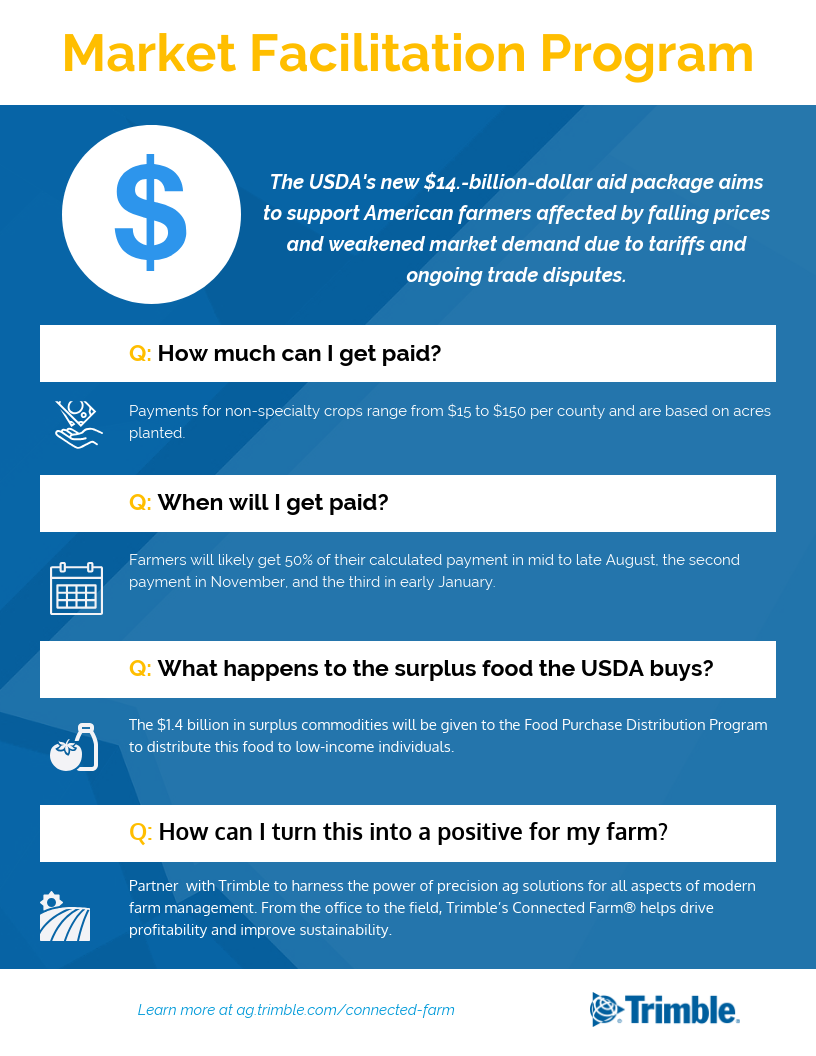Farming is challenging.
Planning for a crop, securing inputs at a good price, and juggling field work around Mother Nature — all while maintaining a healthy bottom line — is no small feat. That’s why today’s most successful farmers are multi-talented entrepreneurs who have learned the value of being prepared and acting quickly to leverage in-season opportunities; thus, maximizing productivity and profitability.
When market dynamics and political realities beyond farmers’ control impact their business’ success, concerns about the future can escalate. Today, many U.S. farmers are paying close attention to the USDA’s recent Market Facilitation Program. The $14.-billion-dollar aid package was announced in May, with more specific details coming to light in recent weeks. It aims to support farmers hit by falling prices and weakened market demand due to ongoing trade disputes.
The aid package has sparked various reactions across the farming community, as well as the public at large. Some object outright to aid efforts of any kind; others say the federal government isn’t doing enough.
“Late planting dates and less than ideal planting conditions cause problems across the board from population issues to increased disease pressure, all of which have a negative effect on yields,” said Jake Moore, a seventh-generation corn and soybean farmer from Clinton County, Ohio. Combined with global tariff pressure, this year has been especially daunting for farmers. To aid in overcoming these challenges, Market Facilitation Program payments in Clinton County are significant at $83 per acre. Despite this, there is apprehension about the future. “It is still hard to ignore the fact that it is a short-term fix for the serious trade issues we are encountering now and will continue to in the near future,” said Moore.

